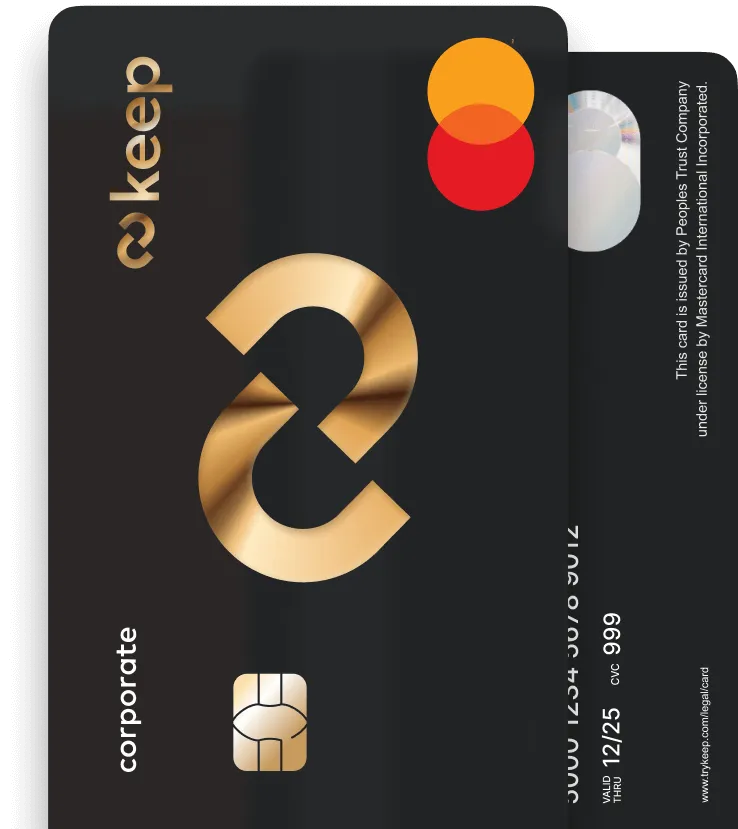What Are Business Expense Categories?
Business expense categories are a crucial component of financial management for companies of all sizes. They provide a structured way to organize and track the various costs associated with running a business. By categorizing expenses, businesses can gain valuable insights into their spending patterns, make informed budgeting decisions, and simplify tax reporting. This article will explore the concept of business expense categories, their importance, common categories, and best practices for managing them effectively.

Definition of Business Expense Categories
Business expense categories are predefined classifications used to group similar types of business costs. These categories help organize financial transactions and provide a clear picture of where a company's money is being spent. They are essential for budgeting, financial analysis, and tax reporting purposes.
Importance of Categorizing Business Expenses
Financial Clarity
Properly categorized expenses provide a clear overview of a company's financial health. This clarity allows business owners and managers to make informed decisions about resource allocation and cost-cutting measures.
Budgeting and Forecasting
When expenses are well-categorized, it becomes easier to create accurate budgets and financial forecasts. Historical data from categorized expenses can inform future spending plans and help identify areas where costs can be optimized.
Tax Compliance
Expense categories play a crucial role in tax reporting. Many business expenses are tax-deductible, and having clearly defined categories makes it easier to identify and claim these deductions accurately.
Performance Analysis
By categorizing expenses, businesses can analyze the performance of different departments or cost centers. This analysis can reveal inefficiencies and areas for improvement.
Common Business Expense Categories
While specific categories may vary depending on the nature of the business, industry, and accounting practices, here are some common business expense categories:
Advertising and Marketing
This category includes all costs associated with promoting the business, such as:
- Print and digital advertising
- Social media marketing
- Public relations
- Marketing materials (brochures, business cards)
- Website development and maintenance
Rent and Utilities
Expenses related to the physical space where the business operates:
- Office or retail space rent
- Electricity, water, and gas bills
- Internet and phone services
Payroll and Benefits
All costs associated with compensating employees:
- Salaries and wages
- Payroll taxes
- Employee benefits (health insurance, retirement plans)
- Bonuses and commissions
Office Supplies and Equipment
Expenses for items used in daily business operations:
- Stationery and office supplies
- Computers and software
- Furniture
- Printers and copiers
Travel and Entertainment
Costs incurred for business-related travel and client entertainment:
- Airfare and lodging
- Meals during business trips
- Client dinners and events
- Conference fees
Professional Services
Fees paid to external professionals for specialized services:
- Legal fees
- Accounting and bookkeeping services
- Consulting fees
- IT support
Insurance
Various insurance policies necessary for business operations:
- General liability insurance
- Property insurance
- Professional liability insurance
- Workers' compensation insurance
Vehicle Expenses
Costs associated with business vehicles:
- Fuel
- Maintenance and repairs
- Vehicle insurance
- Lease payments
Research and Development
Expenses related to developing new products or services:
- Materials for prototypes
- Testing equipment
- Patent fees
- Specialized software
Training and Education
Costs for employee skill development:
- Workshop and seminar fees
- Online courses
- Educational materials
- Professional certifications
Specialized Categories for Different Industries
Different industries may have unique expense categories specific to their operations. For example:
Manufacturing
- Raw materials
- Production equipment maintenance
- Quality control
Retail
- Inventory purchases
- Point-of-sale systems
- Store fixtures and displays
Technology
- Software licenses
- Cloud services
- Data storage
Healthcare
- Medical supplies
- Laboratory equipment
- Patient management systems
Tax-Deductible Expense Categories
Many business expenses are tax-deductible, which can significantly reduce a company's tax liability. Some common tax-deductible expense categories include:
- Advertising and marketing costs
- Employee salaries and benefits
- Rent and utilities
- Office supplies and equipment
- Travel expenses (with some limitations)
- Professional fees
- Insurance premiums
- Vehicle expenses (if used for business purposes)
- Depreciation of assets
It's important to note that tax laws can change, and certain expenses may have specific rules or limitations regarding deductibility. Consulting with a tax professional is advisable to ensure compliance with current regulations.
Best Practices for Managing Business Expense Categories
Develop a Comprehensive Chart of Accounts
Create a detailed chart of accounts that includes all relevant expense categories for your business. This chart should be specific enough to provide meaningful insights but not so granular that it becomes cumbersome to manage.
Use Accounting Software
Implement accounting software that allows for easy categorization of expenses. Many modern solutions offer features like automatic categorization based on vendor or transaction type, which can save time and reduce errors.
Regularly Review and Update Categories
Business needs evolve over time, so it's important to periodically review your expense categories. Add new categories as needed and consolidate or remove those that are no longer relevant.
Train Employees on Proper Categorization
Ensure that all employees involved in expense reporting understand the different categories and how to properly assign expenses. This training can help maintain consistency and accuracy in financial records.
Implement Approval Processes
Establish clear approval processes for expenses, especially for larger or unusual costs. This oversight can help ensure that expenses are properly categorized and align with company policies.
Reconcile Regularly
Perform regular reconciliations of your expense accounts to catch any miscategorized items or discrepancies. This practice helps maintain the accuracy of your financial records.
Keep Detailed Records
Maintain detailed records of all expenses, including receipts and invoices. This documentation is crucial for tax purposes and can provide valuable context for future financial analysis.
Consider Sub-Categories
For more detailed tracking, consider implementing sub-categories within your main expense categories. For example, under "Marketing," you might have sub-categories for "Social Media Advertising" and "Print Advertising."
Leverage Technology for Expense Tracking
Utilize expense tracking apps and tools that allow employees to easily capture and categorize expenses on the go. These solutions can streamline the expense reporting process and improve accuracy.
Challenges in Managing Business Expense Categories
Inconsistent Categorization
One of the biggest challenges in managing expense categories is ensuring consistency in how expenses are categorized across the organization. Different employees may interpret categories differently, leading to inconsistencies in financial reporting.
Keeping Up with Changing Business Needs
As businesses grow and evolve, their expense categories may need to change. Regularly updating the chart of accounts to reflect new business activities or cost centers can be challenging.
Balancing Detail and Manageability
Finding the right balance between having enough detail in expense categories and keeping the system manageable can be difficult. Too many categories can make reporting cumbersome, while too few can lead to a lack of meaningful insights.
Compliance with Tax Regulations
Ensuring that expense categories align with tax regulations and maximizing deductions while remaining compliant can be complex, especially as tax laws change.
The Future of Business Expense Categories
As technology continues to advance, the management of business expense categories is likely to evolve. Some potential future developments include:
AI-Powered Categorization
Artificial intelligence and machine learning algorithms may become more sophisticated in automatically categorizing expenses with high accuracy, reducing the need for manual intervention.
Real-Time Financial Insights
Advanced analytics tools may provide real-time insights into expense patterns, allowing businesses to make more agile financial decisions.
Integration with Budgeting and Forecasting Tools
Expense categorization systems may become more tightly integrated with budgeting and forecasting tools, providing seamless financial planning capabilities.
Blockchain for Expense Verification
Blockchain technology could be used to create tamper-proof records of expenses, enhancing the accuracy and reliability of financial reporting.
Conclusion
Business expense categories are a fundamental aspect of financial management, providing structure and clarity to a company's spending. By implementing a well-designed system of expense categories, businesses can gain valuable insights into their financial health, make informed decisions, and streamline their tax reporting processes.
Effective management of expense categories requires a combination of clear policies, employee training, and leveraging appropriate technology. While challenges exist in maintaining consistent and relevant categorization, the benefits of a well-organized expense tracking system far outweigh the effort required to implement and maintain it.
As businesses continue to evolve in an increasingly digital world, the management of expense categories will likely become more automated and integrated with other financial systems. However, the core principles of clarity, consistency, and compliance will remain essential in ensuring that business expense categories continue to serve as a valuable tool for financial management and decision-making.
Citations: [1] https://www.netsuite.com/portal/resource/articles/financial-management/small-business-expense-categories-list.shtml [2] https://www.bill.com/blog/categorize-business-expenses [3] https://use.expensify.com/resource-center/guides/business-expense-categories [4] https://ramp.com/blog/business-expense-categories [5] https://www.volopay.com/expense-management/business-expense-categories/ [6] https://www.fylehq.com/blog/business-expense-categories [7] https://blog.hubspot.com/sales/business-expenses-list [8] https://www.netsuite.com/portal/resource/articles/financial-management/business-expenses.shtml [9] https://www.brex.com/journal/business-expense-categories [10] https://ramp.com/blog/what-are-miscellaneous-expenses

Ditch the Big 5
Apply online for a Keep Business Mastercard in just 8 minutes - with approvals in 72 hours or less.




